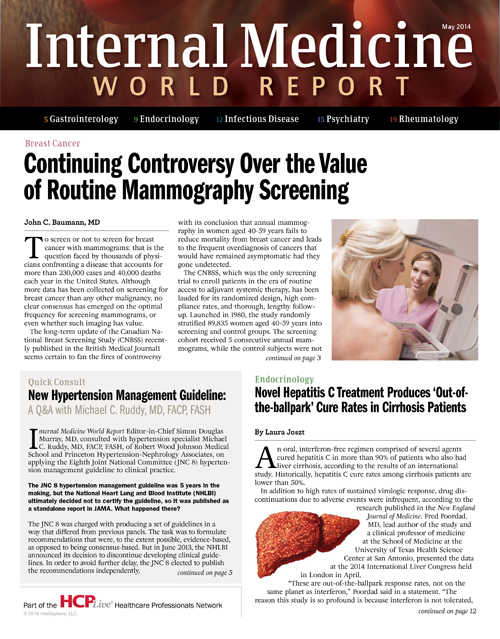Publication
Article
Internal Medicine World Report
Small Particle Diet May Relieve Diabetic Gastroparesis
Author(s):
Incorporating aspects of the small particle diet into the recommendations for diabetic gastroparesis might be beneficial to patients.

Although delayed gastric emptying is a well-known complication of both type 1 and 2 diabetes, given its estimated 30-65% prevalence in outpatients with a long history of either endocrine disorder, clinicians often fail to recognize abdominal pain, bloating, and early satiety as gastroparesis, which leads to suboptimal management and a greater likelihood of exacerbating symptoms like unstable plasma glucose levels, hyperglycemia, and hypoglycemia.
Most often, the treatment of choice for gastroparesis is a dietary modification; specifically, clinicians generally advise patients to consume low-fat and low-fiber foods, preferably in small, frequent meals. Now, a study conducted by a team of Swedish researchers and published in the January 2014 edition of The American Journal of Gastroenterology has compared the effects of a small particle size diet to the standard diet recommended for diabetic gastroparesis.
In a previous work, the researchers determined meals with large particle sizes altered gastric emptying in patients with diabetic gastroparesis, while meals with small particle sizes maintained gastric emptying times similar to normal controls. According to the authors, small particle diets consist of foods that are easy to mash with a fork into small pieces; as a result, such diets exclude foods with husks or peels, such as corn, tomatoes, and onions; foods with membranes, such as oranges; stringy foods like asparagus and broccoli; and foods with seeds and grains, such as nuts and whole grain bread.
In their present study, the research team randomized 56 subjects with insulin-treated diabetes and gastroparesis to receive either a small particle diet or the standard recommended diet over 20 weeks.
The researchers found a small particle diet produced a substantial improvement in upper gastrointestinal (GI) symptoms associated with diabetic gastroparesis compared to the standard recommended diet. Although nutrient intake, glycemic control, and quality of life were unaffected, the research team speculated that the 20-week study period was too short to yield results in those specific areas.
Based on their findings, the study authors concluded that incorporating aspects of the small particle diet into the recommendations for diabetic gastroparesis might be beneficial to patients.





